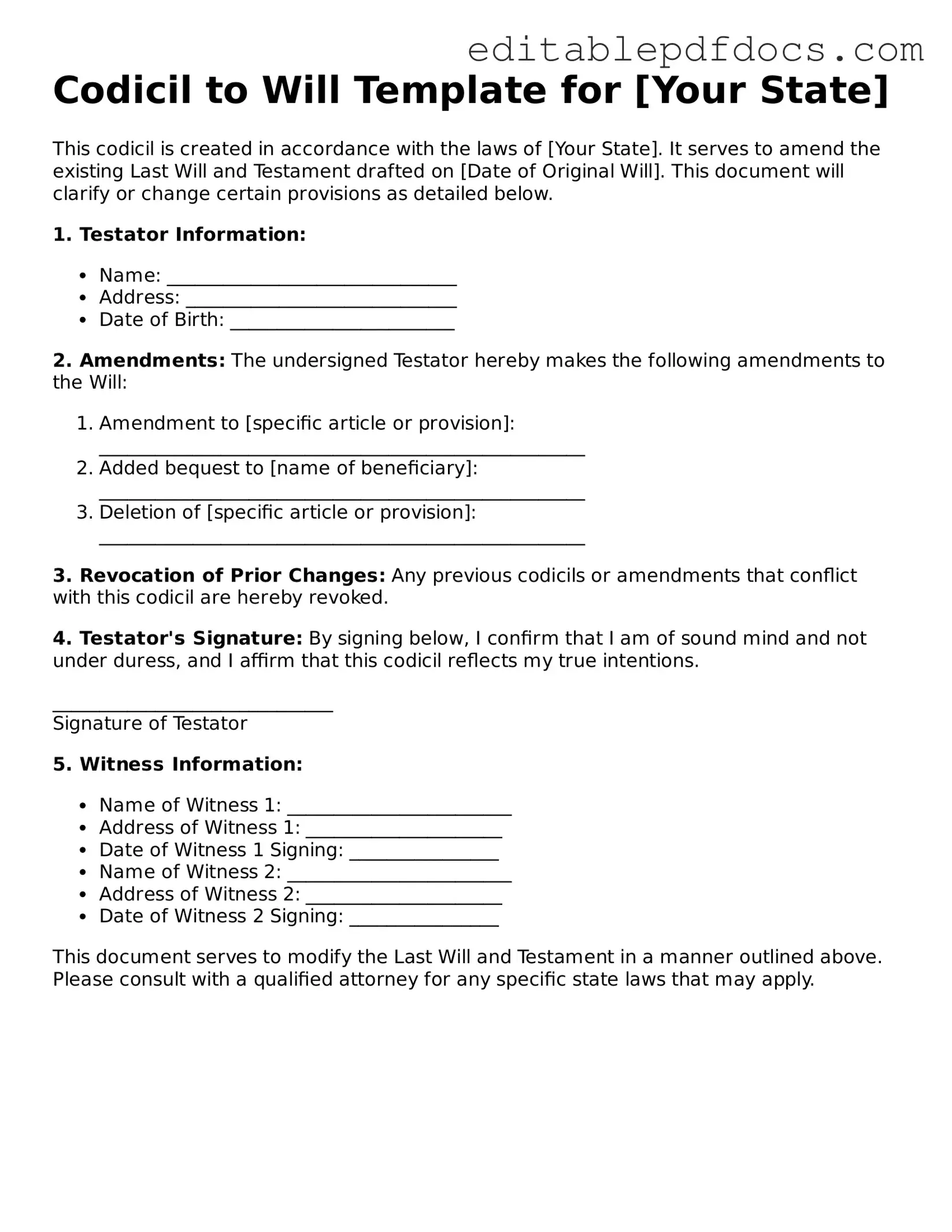When it comes to estate planning, making changes to your will can be a daunting task. However, a Codicil to Will form offers a straightforward solution for those who wish to amend their existing will without having to draft an entirely new document. This form allows individuals to add, modify, or revoke specific provisions within their will, ensuring that their final wishes are accurately reflected. It's essential to understand that a codicil must be executed with the same formalities as the original will, which typically includes signing in the presence of witnesses. By utilizing a codicil, you can address changes in personal circumstances, such as marriage, divorce, or the birth of a child, without starting from scratch. Additionally, this form can clarify or correct any ambiguities in your will, providing peace of mind that your estate will be handled according to your desires. Whether you're looking to make minor adjustments or significant updates, a codicil serves as a valuable tool in the estate planning process, allowing for flexibility and adaptability as life unfolds.
